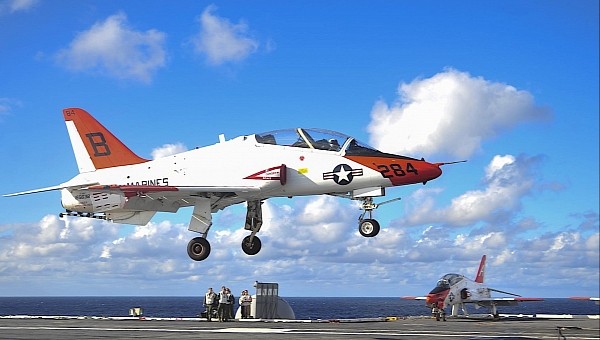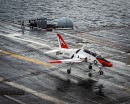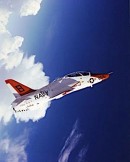A couple of weeks ago, the U.S. Navy announced the grounding of its fleet of T-45C Goshawk training jets. The reason for the decision (which was officially designated as a safety pause) was the discovery of a potential engine blade failure whose exact nature was not disclosed. At least in some cases, it seems, the problem has been solved.
On the last day of October, the Navy announced some Goshawks would be allowed to resume flight operations, because they are not affected by the problem because they simply lack the faulty parts. Although it did not go into specifics, the military branch said the issue is related to some engine blades not meeting the manufacturer’s specifications, and the aircraft using them will still not be allowed to fly.
We are not told how many of them that is. Over the years, 200 of these BAE Systems Hawk-based trainers were made, but its unclear how many of them are being used by the Navy and Marine Corps.
All the engines deployed on the Goshawks trainer jets are of Rolls-Royce make, and the company is now working with Navy engineers to “evaluate engineering data on the non-conforming parts and work to return additional T-45Cs to operational status.”
A T-45C Goshawk’s single engine is capable of pushing the plane to speeds of 645 mph (1,038 kph), at altitudes as high as 42,500 feet (12,954 meters), and for distances of up to 805 miles (1,288 km).
We’re not given an estimate as to when operational status for the entire fleet will be declared, but Navy officials say it’ll be a staggered approach, not a process that will be rushed. In the meantime the pilots that needed these planes for airborne training purposes will instead have to maximize ground training “including classroom lectures, simulators and computer-based training.”
We are not told how many of them that is. Over the years, 200 of these BAE Systems Hawk-based trainers were made, but its unclear how many of them are being used by the Navy and Marine Corps.
All the engines deployed on the Goshawks trainer jets are of Rolls-Royce make, and the company is now working with Navy engineers to “evaluate engineering data on the non-conforming parts and work to return additional T-45Cs to operational status.”
A T-45C Goshawk’s single engine is capable of pushing the plane to speeds of 645 mph (1,038 kph), at altitudes as high as 42,500 feet (12,954 meters), and for distances of up to 805 miles (1,288 km).
We’re not given an estimate as to when operational status for the entire fleet will be declared, but Navy officials say it’ll be a staggered approach, not a process that will be rushed. In the meantime the pilots that needed these planes for airborne training purposes will instead have to maximize ground training “including classroom lectures, simulators and computer-based training.”





